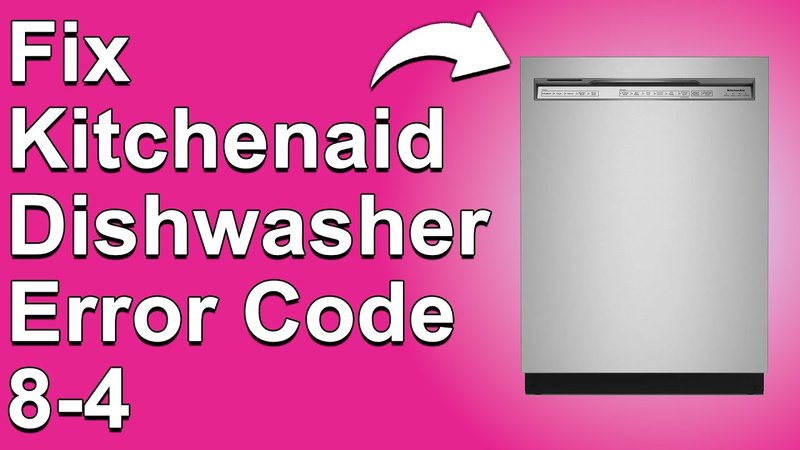
Error codes are like your dishwasher’s way of sending an SOS. They’re telling you something has gone awry under the hood, and it’s time to investigate. The E3 code, specifically, usually relates to a problem with the heating element. This component is crucial for ensuring your dishes are properly sanitized and dry by the end of the cycle. Without it functioning correctly, your dishwasher might not reach the necessary temperatures to kill bacteria, leaving your dishes less than spotless. Understanding what causes the E3 error and when to call in a professional can save you time and potentially prevent more significant damage down the line.
Understanding the E3 Error Code
The E3 error code on a KitchenAid dishwasher typically signifies an issue with the heating element. This part of your dishwasher is like the sun for your clothesline — it provides the necessary warmth to dry your dishes and ensure they come out of each cycle hygienically clean. When the heating element isn’t functioning correctly, your appliance might struggle to maintain the required water temperature, leading to unsatisfactory cleaning results.
You might be wondering how a heating element could go wrong. Well, just like a light bulb can burn out after extensive use, the heating element in your dishwasher can fail over time. Factors such as frequent use, hard water, or simply age can contribute to this wear and tear. Sometimes, the problem might even be as simple as a loose connection or a tripped circuit. However, pinpointing the exact cause requires a bit of detective work.
If you’re dealing with an E3 error, it’s crucial to first consult the dishwasher’s manual. This booklet is more than just a paperweight; it contains specific guidance on your model’s error codes and troubleshooting steps. Often, manufacturers provide a step-by-step guide to addressing common issues, which can help you decide if this is a fixable problem or if it’s time to call in reinforcements.
When To Call a Technician
Here’s the deal: while it’s tempting to try and fix the E3 error yourself, sometimes it’s best to leave it to the professionals. Think of it like this — if your car starts making a strange noise, you might pop the hood and take a look, but unless you’re a mechanic, you’re probably not going to start dismantling the engine. The same principle applies here. If the troubleshooting tips in your manual don’t resolve the issue, it’s time to call a technician.
A qualified technician has the tools and expertise to safely assess and repair the heating element or any associated electrical issues. This is important because working with the internal components of a dishwasher can be dangerous if you’re not sure what you’re doing. Additionally, attempting a fix without the right knowledge might void your appliance’s warranty, leading to more out-of-pocket expenses in the future.
When you call a technician, they’ll likely perform a diagnostic test to confirm the E3 error’s cause. This involves checking the element for continuity and inspecting other components to ensure everything is in working order. Once they’ve pinpointed the issue, they can recommend the best course of action — whether it’s replacing a faulty part or addressing an electrical problem. Their input can not only fix the immediate problem but also help you avoid similar issues in the future.
Preventative Measures & Final Thoughts
It’s always a good idea to take steps to prevent errors from occurring in the first place. Regular maintenance can help keep your KitchenAid dishwasher running smoothly and minimize the risk of an E3 error. Consider scheduling routine checks with a professional to ensure all components are in good condition. Think of it as a wellness check-up — preventive care can save you a lot of hassle down the road.
You might also want to ensure that you’re using your dishwasher correctly. Avoid overloading it, as this can put extra strain on its components. Use dishwasher-safe detergents and regularly clean filters and spray arms to prevent blockages. Hard water can be a silent saboteur, leading to build-ups that affect performance; using a water softener might be a wise investment if you notice mineral deposits around your home.
In conclusion, while seeing an E3 error on your KitchenAid dishwasher can be frustrating, understanding what it means and when to call a technician can mitigate the stress. Remember, your dishwasher is a complex machine, and a little professional help can go a long way in keeping it running optimally. So, keep calm, consult your manual, and if needed, pick up the phone for professional assistance. Your dishes — and your peace of mind — will thank you.